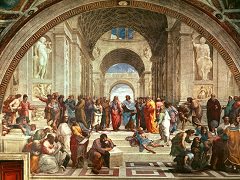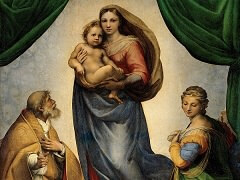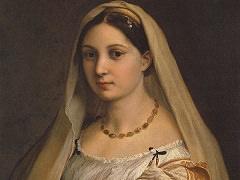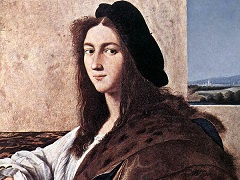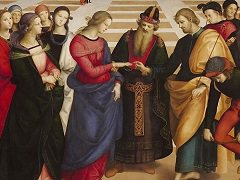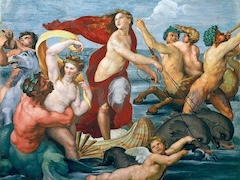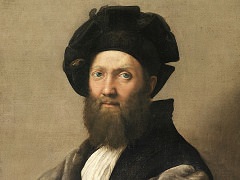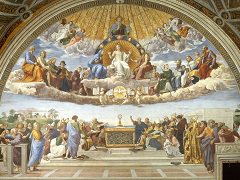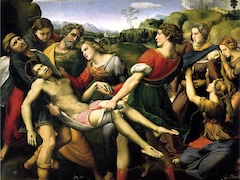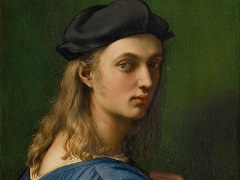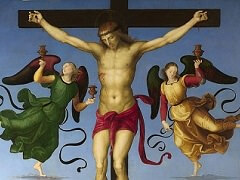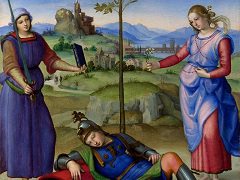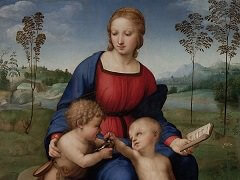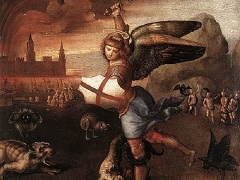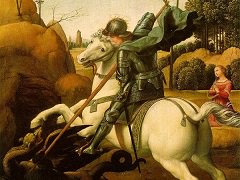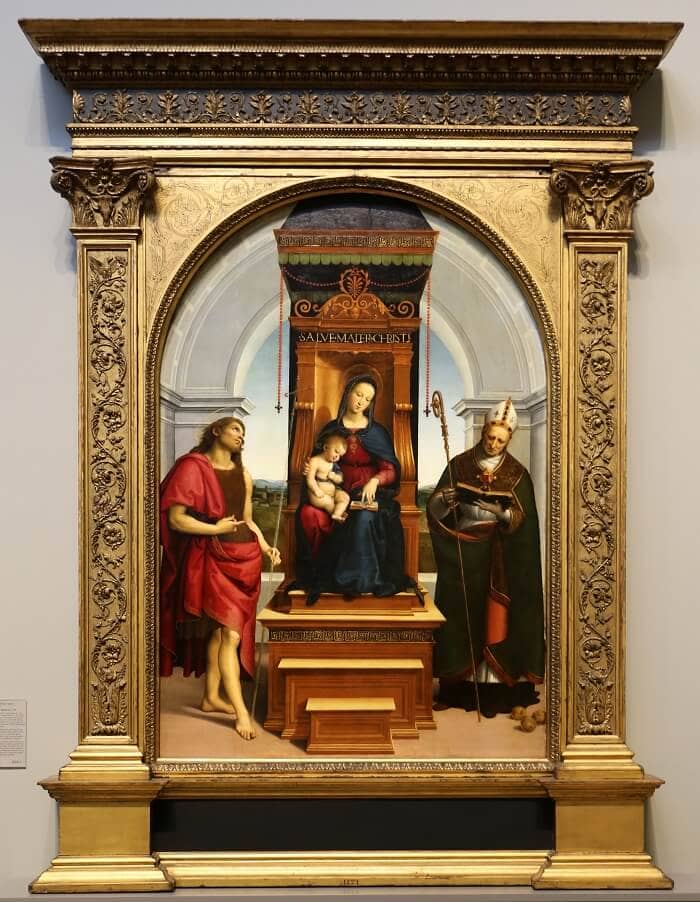
Early in his career Raphael was confronted by another theme very popular with Italian patrons: that of the Sacra Conversazione. This picture type shows the Madonna enthroned centrally, with saints on both sides, all the figures being contained within a single, unified space. Saints from many different periods could be grouped in various iconographic combinations. The donors' patron saints could be combined with local saints or those with an importance that teached beyond just one region, and the throne could be set in a room or in front of a landscape. An example of this picture type is the Ansidei Madonna. Raphael painted it for Bernardino Ansidei's Chapel in the Servite Church of San Fiorenzo in Perugia, which was dedicated to St. Nicholas of Bari. This picture illustrates a problem which applies to the Colonna Altarpiece in New York, Raphael's first Sacra Conversazione, and which art historians are also discussing in relation to the Coronation of the Virgin. These two works appear to have been painted in two stages with intervals in between - which makes the exact date of completion uncertain. A date in Roman numerals appears on the hem of the Virgin's mantel in the Ansidei Madonna, but it is not certain what that date is. MDV, in other words 1505, is clearly visible; but then the V is followed by one or two further strokes, which could form part of the date, so that 1506 or 1507 are also possible dates of completion. However, the style of the painting suggests the first date is the most likely. At all events, the painting was started earlier, for the Virgin and Christ Child still show Peruginos influence. Moreover, the perspective foreshortening of the throne, which is not deep enough for the Madonna, is unsuccessful. We can therefore assume that the arrist began work on this painting even before he painted his Marriage of the Virgin. Nevertheless, the figure of Nicholas of Bari dominates the space and is so "present'' as a rounded, three-dimensional body that we can assume that Raphael was beginning to respond to new influences when painting the Ansidei Madonna.
These influences were largely the result of the time Raphael spent in Florence from late 1504 or early 1505. This was probably not the first time that Raphael had visited the cradle and citadel of the Early Renaissance, but this stay marked an important stage in his development. He began enthusiastically to explore works by Leonardo da Vinci and the young Michelangelo, whereas previously Perugino, Pinturicchio, Luca Signorelli, and Flemish artists such as Hans Memling had been important to him. This response to the works of other artists reveals a significant aspect of his own creative development: that he learnt as much from studying the art of others as he did from directly observing nature. What is important, however, is that he always endeavored not merely to imitate these models, but to surpass them.

